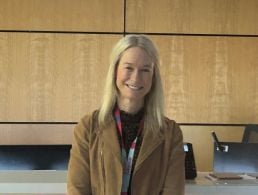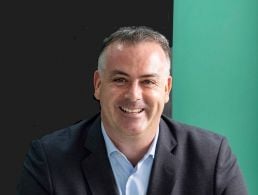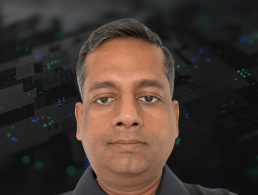Vidya Krishnan, chief learning officer at Ericsson, outlines the most critical components of a successful learning and development culture.
As chief learning officer at Ericsson, Vidya Krishnan is passionate about “the power of becoming”. She started out her own career in electrical engineering, but is now working in what she calls her “fourth career”. In the past 25 years, she has worked in networks engineering, digital business consulting and people management.
“My love of teaching was sparked from the very start, back when I was a teenage camp counsellor,” Krishnan says. “Seeing the positive power of people sharing skills and learning together has stayed with me throughout my career. It’s my love and challenge.”
While her current job is to lead learning and development at Ericsson globally from her base in Texas, Krishnan is a firm believer in empowering employees to ultimately take the reins. This relies on a workplace that prioritises resilience and belonging, she says, as well as technology for good. “Technology has a huge role to play in learning as an equaliser, amplifier and simplifier,” she adds.
“We believe that digital access to learning and development must be equitable and inclusive for it to be effective and empowering. The digital divide thwarts progress unacceptably.”
Vidya Krishnan. Image: Ericsson
The learning culture at Ericsson
Development initiatives for staff can take many different forms, and one of Ericsson’s recently introduced programmes for managers is a “culture and leadership transformation journey” called Ericsson on the Move. This initiative leaves “zero tolerance for zero learning”, Krishnan explains, helping those in leadership roles to become “movers” when it comes to “growing their skills, expanding their experiences and contributing to others”.
“Our ecosystem is the key to making learning easy, personalised and intelligent – giving learners exactly what they need, when they need it, so that the learning can find the learner, rather than the other way around,” she adds.
To achieve this, her team leverages partnerships with third parties such as Pluralsight and Degreed. But internal collaboration is just as important. “A growth mindset entails growing the skills of other people along with your own, through great teaching and experiential learning,” Krishnan says.
“We reframe learning as an investment rather than a cost, demanding co-ownership beyond consumption, and clearly aligned to our prioritised business areas of growth.”
Drawing on the right incentives
A key ingredient for success here is reward, according to Krishnan. Her team uses a model called TOP to outline the benefits of lifelong learning and development to staff – namely, the chance to refine their talents, access opportunities to create value, and find their chosen purpose or passion.
“Success and fulfilment are the sweetest rewards that happen when people get to harmonise these three things,” she explains. “We want our lifelong learners and teachers to see that their skills profile can signal their growth, credentials, experiences, interests and contributions in a way that unlocks that TOP, by connecting them to opportunity, investment and talent differentiation.”
Data is another crucial factor. Krishnan says that “learning is like oxygen” since it is “vital but invisible”, but leaders can draw on analytics to change that by visualising skills progression, predicting shifts in skills needs and more.
“Analytics allows a persona-based understanding of our people’s learning habits, so that our ecosystem can be more personalised in connecting people to possibilities,” she says.
“This is the most critical area in which we ourselves need to upskill, to leverage analytics and data to make return on learning concrete and relevant. Here again, the work with Pluralsight to quantify and assess skill capability is an important facet to making our ecosystem more intelligent and empathetic in connecting skills to work.”
Upskilling for the future
Keeping up to date with skills data is vital, but so is maintaining flexibility. Krishnan refers to author and educator Peter Drucker, who said that the greatest danger in times of turbulence is not the turbulence, it is to act with yesterday’s logic.
She’s determined to keep Drucker’s point in mind as we upskill for the future. “Today, the future is in flux. The pandemic has intensified the upheaval. The World Economic Forum predicts more than 50pc of workforces will have to reskill nearly half of their critical skills over the next five years for businesses to stay competitive and viable.
“These emerging skills, however, are often hard to recognise at first. Companies that thrive amid such uncertain futures will therefore need to go beyond reskilling to empower belonging, resilience and reinvention in their workforce. Otherwise the future of work won’t work.
“Those who continue to act with yesterday’s logic in failing to prioritise these outcomes will fall behind, because they will be outlearned by the competition.”
Integrating learning and development in a tech setting
In order to be successful, learning and development programmes must also be integrated across different departments in an organisation. Krishnan says it’s important to view your learning and development team as a technology team.
“Recognising that identity and what it demands in our operating rhythm, skillsets and interaction is critical for us,” she explains. “We partner as one team with our IT, R&D, business and market areas, and we know that our platforms, interworking and technology roadmap is a powerful glue that binds us together.”
Different divisions at Ericsson also report on experiments and pilots, share what they see in other industries and collaborate on roadmaps.
“Nothing is quite so powerful as technology for large-scale behavioural change, and ultimately our aspirations for skill come down to behaviour and will, so prioritising and constantly progressing on technology alignment is everything to us.”




